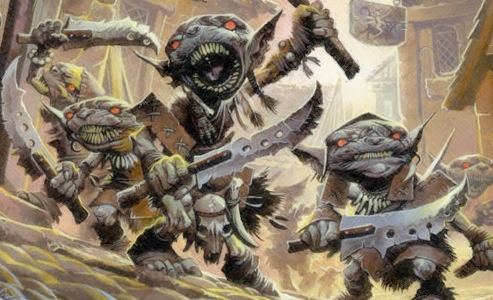The Right Character For The Right Job
I can’t remember a game in the last few years that didn’t have the kind of conflict Quincy’s facing in today’s strip. Maybe someone brings a violent wild card to a group of stoic, focused adventurers. Sometimes it’s someone of a different alignment. Other times someone’s magical in a group that distrusts magic. Every once in awhile it doesn’t happen in the beginning of the game, but it quickly emerges once the party has to make a big decision, such as choosing when to save a world. There’s something intrinsic in the fabric of my groups that requires someone to be the opposite of everyone else in the group.
Some of it could be considered my fault. I’ll take some blame. I tend to like slightly grittier topics. Whether it’s something huge, such as the world being on the brink of destruction, or something smaller scale, such as one race not being trusted, it could be argued that I inject elements of tension from the start, and that’s the reason the groups don’t have the cohesion I want. Here’s an example. The elves of my longest-running campaign world were part of an empire bent on world conquest. Trapped inside their own forests for centuries, they found a way to break out, and begun destroying or conquering anything in their path. As a result, elves were not trusted in my games for a long time. And if ever a player rolled an elf, one or all of the group would treat them like a hostile force. Instead of dramatic tension as a side effect, it would become the focus of a least one player’s character. Every time.
The funny thing is, this sort of thing never happens when someone plays a monster race. Monsters are welcomed into my groups with open arms. They’re celebrated even. A guy wears a hood and bandit mask? The group doesn’t trust him. A small elven child is found on a different continent and has no memory of the conflict raging elsewhere? The group may have to kill her. A goblin with a raspy demonic-sounding voice wants to join the group? He seems trustworthy.
It didn’t used to be like this. In the days of D&D 3.5, group cohesion was stronger. Sure, it wasn’t perfect, but overall the groups had a more classic, we’re-in-this-together vibe to them. Even when a group wasn’t exactly sure what should be done, they would back each other up. I don’t know that 3.5 exactly was the reason for this, just that this was the time when group cohesion was the strongest. We’re playing with the Cortex system now, and I have to admit, group cohesion is stronger than it was previously.
Come to think of it, this only really became a problem when we started playing Pathfinder. We’ve gotten a lot of good games out of Pathfinder, but for some reason it did also give us some of our most tense groups, in-game.


Fat stacks GET MONEY